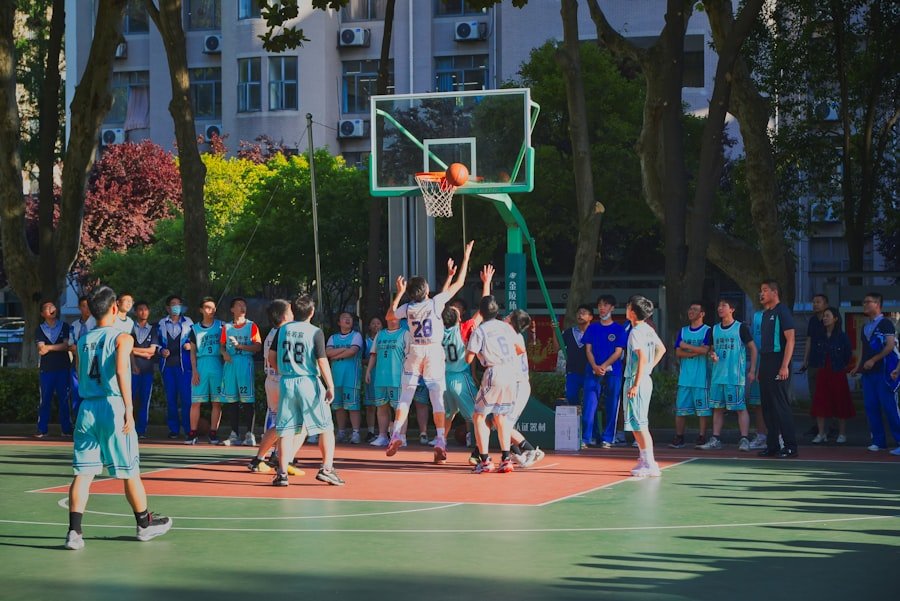Now Reading: The Rise of Spectator Gaming: Beyond Playing to Watching
-
01
The Rise of Spectator Gaming: Beyond Playing to Watching
The Rise of Spectator Gaming: Beyond Playing to Watching

As I delve into the world of spectator gaming, I find myself captivated by the unique blend of entertainment and competition that it offers. Spectator gaming, at its core, refers to the phenomenon where individuals watch others play video games, often in real-time. This form of entertainment has evolved significantly over the years, transforming from a niche interest into a global phenomenon that attracts millions of viewers.
The thrill of watching skilled players navigate complex game worlds, execute intricate strategies, and engage in high-stakes competitions has created a vibrant culture that resonates with fans across the globe. The allure of spectator gaming lies not only in the gameplay itself but also in the community that surrounds it. As I immerse myself in this world, I notice how it fosters connections among fans, players, and content creators alike.
Whether it’s through live streams on platforms like Twitch or YouTube, or through organized esports tournaments, spectator gaming has become a social experience that transcends geographical boundaries. In this article, I will explore the evolution of spectator gaming, its impact on various platforms, and the future it holds as technology continues to advance.
Key Takeaways
- Spectator gaming has become a global phenomenon, with millions of people tuning in to watch others play video games.
- The evolution of spectator gaming has been driven by advancements in technology, making it easier for people to stream and watch gaming content.
- Esports has played a significant role in the rise of spectator gaming, with professional gaming leagues attracting large audiences and lucrative sponsorships.
- Social media has had a profound influence on spectator gaming, allowing gamers and fans to connect and share content on a global scale.
- The future of spectator gaming looks promising, with virtual reality and augmented reality poised to enhance the viewing experience and community aspect of gaming.
The Evolution of Spectator Gaming
Reflecting on the evolution of spectator gaming, I can trace its roots back to the early days of video gaming when friends would gather around a console to watch each other play. This informal setup laid the groundwork for what would eventually blossom into a massive industry. As technology progressed, so did the ways in which we could share and consume gaming content.
The introduction of online multiplayer games allowed players to connect with others around the world, and soon after, streaming platforms emerged, enabling gamers to broadcast their gameplay live. I remember the excitement that came with the launch of platforms like Twitch in 2011. It was a game-changer for spectator gaming, providing a dedicated space for gamers to showcase their skills while allowing viewers to engage with them in real-time.
This shift not only democratized content creation but also gave rise to a new breed of entertainers—streamers—who could build their own brands and communities around their gaming experiences. As I reflect on this evolution, it’s clear that spectator gaming has transformed from a casual pastime into a legitimate form of entertainment that rivals traditional sports.
The Impact of Streaming Platforms on Spectator Gaming

The impact of streaming platforms on spectator gaming cannot be overstated. As I explore this landscape, I see how these platforms have revolutionized the way we consume gaming content. With just a few clicks, I can access countless streams featuring everything from casual gameplay to high-stakes tournaments.
This accessibility has not only broadened the audience for gaming but has also created opportunities for aspiring gamers to gain recognition and build careers. Moreover, streaming platforms have introduced interactive elements that enhance the viewing experience. As I watch my favorite streamers, I can engage with them through chat, participate in polls, and even influence their gameplay decisions.
This level of interactivity fosters a sense of community and connection that traditional media simply cannot replicate. The ability to communicate directly with streamers and fellow viewers creates an immersive experience that keeps me coming back for more.
The Role of Esports in the Rise of Spectator Gaming
Esports has played a pivotal role in propelling spectator gaming into the mainstream. As I observe the rise of competitive gaming, I am struck by how it has transformed from informal competitions among friends to large-scale events that fill arenas and attract millions of viewers online. The excitement surrounding esports tournaments is palpable; I can feel the energy in the air as fans cheer for their favorite teams and players.
The professionalization of esports has also contributed to its legitimacy as a spectator sport. Organizations are now investing heavily in teams and players, creating structured leagues and tournaments that mirror traditional sports. As I watch these events unfold, I am reminded of the dedication and skill required to compete at such high levels.
The narratives surrounding players and teams add an extra layer of drama and excitement, making it easy for me to become emotionally invested in their journeys.
The Influence of Social Media on Spectator Gaming
Social media has become an integral part of the spectator gaming experience, shaping how fans interact with content and each other. As I scroll through platforms like Twitter and Instagram, I see a constant stream of updates from my favorite gamers and streamers. These platforms allow them to share highlights from their gameplay, engage with their audience, and build their personal brands.
The immediacy of social media creates a dynamic environment where fans can connect with their idols in real-time. Additionally, social media serves as a powerful tool for promoting events and tournaments. I often find myself discovering new games or upcoming competitions through posts shared by friends or influencers I follow.
This organic sharing helps to cultivate excitement within the community and encourages more people to tune in. The ability to share experiences and reactions instantly enhances my connection to the games and players I love.
The Rise of Professional Gaming Leagues

Structure and Organization
Teams are formed, sponsorships are secured, and players are signed to contracts—creating an environment that fosters competition at the highest level.
A Platform for Players and Fans
These leagues not only provide a platform for players to showcase their skills but also offer fans a sense of belonging as they rally behind their favorite teams. The excitement of watching live matches unfold is akin to attending a sports event; I can feel the adrenaline rush as teams battle it out for supremacy.
A Legitimate Industry
The rise of professional leagues has elevated spectator gaming into a legitimate industry, attracting investments from major corporations and further solidifying its place in popular culture.
The Global Reach of Spectator Gaming
One of the most remarkable aspects of spectator gaming is its global reach. As I engage with this community, I am constantly reminded that gaming transcends cultural and geographical boundaries. Players from different countries come together to compete, while fans from all walks of life unite over their shared passion for gaming.
This interconnectedness is one of the defining features of spectator gaming; it creates a sense of belonging that is truly unique. The global nature of spectator gaming is further amplified by streaming platforms that allow viewers from around the world to tune in to live events. As I watch tournaments unfold, I can see chat messages pouring in from fans across continents, all sharing their thoughts and reactions in real-time.
This diverse audience enriches the experience for everyone involved, fostering a sense of camaraderie that extends beyond borders.
The Business of Spectator Gaming: Sponsorship and Advertising
As spectator gaming continues to grow, so does its potential as a lucrative business venture. Sponsorships and advertising have become integral components of this industry, providing financial support for players, teams, and events alike. As I explore this aspect of spectator gaming, I am fascinated by how brands are increasingly recognizing the value of reaching this engaged audience.
Companies are eager to partner with popular streamers and esports organizations to promote their products or services. This collaboration not only benefits brands but also provides gamers with opportunities for financial support and exposure. As I witness these partnerships unfold, I realize that they play a crucial role in sustaining the ecosystem of spectator gaming while also enhancing the overall experience for fans.
The Future of Spectator Gaming: Virtual Reality and Augmented Reality
Looking ahead, I am excited about the potential advancements in technology that could shape the future of spectator gaming. Virtual reality (VR) and augmented reality (AR) are poised to revolutionize how we experience games as spectators. Imagine being able to immerse myself in a virtual arena where I can watch matches unfold from any angle or even step into the shoes of my favorite players through VR technology.
These innovations could create entirely new ways for fans to engage with games and competitions. As I envision this future, I can’t help but feel a sense of anticipation for what lies ahead. The integration of VR and AR could enhance not only the viewing experience but also foster deeper connections between players and fans.
The Community Aspect of Spectator Gaming
At its heart, spectator gaming is about community. As I navigate this vibrant landscape, I am continually reminded of the friendships and connections forged through shared interests in games and competitions. Whether it’s participating in online discussions or attending live events with fellow fans, there’s an undeniable sense of belonging that comes from being part of this community.
The community aspect extends beyond just watching games; it encompasses collaboration, support, and shared experiences. As I engage with others who share my passion for gaming, I find myself inspired by their stories and perspectives. This sense of camaraderie enriches my own experience as a spectator and reinforces why I continue to invest my time in this dynamic world.
The Continued Growth of Spectator Gaming
In conclusion, as I reflect on the journey of spectator gaming, it’s clear that this phenomenon is far from reaching its peak. With advancements in technology, increased investment from sponsors, and a growing global audience, spectator gaming is poised for continued growth in the years to come. The evolution from casual viewing to professional leagues has transformed how we engage with games and each other.
As I look forward to what lies ahead, I am filled with excitement for the possibilities that await us in this ever-evolving landscape. Whether through innovative technologies like VR and AR or through the continued development of community-driven experiences, spectator gaming will undoubtedly remain a significant part of our cultural fabric for years to come.
If you’re interested in the history of gaming and how it has evolved over the years, you may want to check out this article on the console wars between PlayStation, Xbox, and Nintendo. It provides a fascinating look at how these companies have competed for dominance in the gaming industry.



























